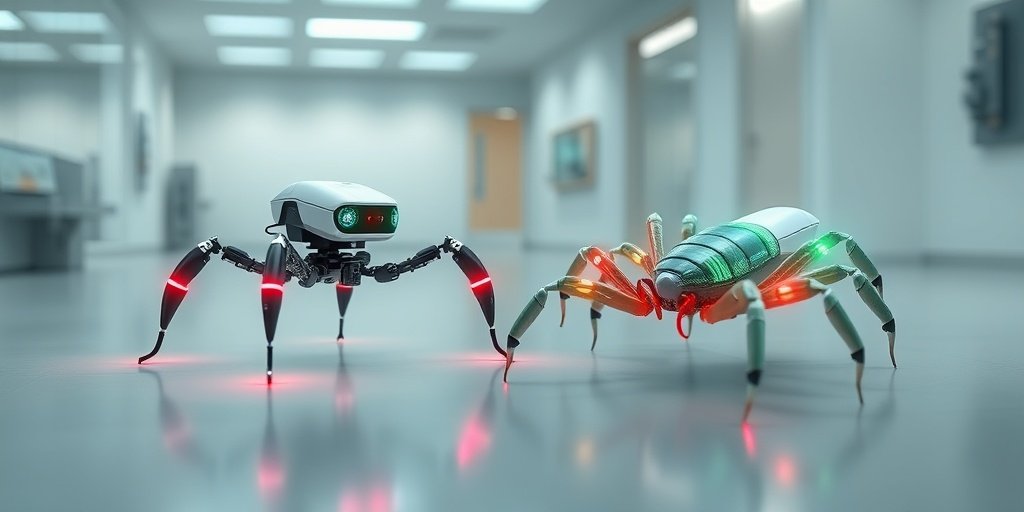⚡ Quick Summary
This study introduces a novel bioinspired piezoresistive pressure sensor (BPPS) that mimics the mechanosensory mechanisms of scorpions, achieving a remarkable sensitivity of 65.56 millivolts per volt per kilopascal and a linearity of 0.99934. The BPPS demonstrates the ability to accurately detect various flow types and approaching objects, paving the way for advancements in intelligent robotics. 🤖
🔍 Key Details
- 📊 Pressure Range: 0 to 500 kilopascals
- 🧩 Flow Detection: Distinguishes laminar, transitional, and turbulent flows
- ⚙️ Technology: Integrates wavelet transform algorithm and ResNet18 deep learning network
- 🏆 Accuracy: Exceeds 85.42% in object shape identification
🔑 Key Takeaways
- 🦠 Bioinspiration from scorpions enhances sensor performance.
- 📈 Sensitivity of 65.56 mV/V/kPa is a significant improvement.
- 🔍 Flow detection capabilities are crucial for robotics applications.
- 🤖 BPPS has been successfully tested in a hexapod robot.
- 💡 Integration of advanced algorithms boosts accuracy in sensing.
- 🌍 Potential applications in health monitoring and AI technologies.
- 🔬 Study published in the journal Sci Adv, highlighting innovative sensor design.

📚 Background
The development of highly sensitive pressure sensors is essential for various applications, including health monitoring and artificial intelligence. Traditional sensors often lack the sensitivity and linearity required for precise measurements. By studying the mechanosensory systems of scorpions, researchers aim to enhance sensor performance significantly, leading to breakthroughs in intelligent robotics and beyond.
🗒️ Study
The research team, led by Wang P and colleagues, focused on creating a bioinspired piezoresistive pressure sensor (BPPS) that leverages the unique sensory mechanisms found in scorpions. The study involved engineering the BPPS to operate effectively within a pressure range of 0 to 500 kilopascals, while also integrating advanced algorithms for improved flow detection and object recognition.
📈 Results
The BPPS achieved an impressive sensitivity of 65.56 millivolts per volt per kilopascal and a linearity of 0.99934. Furthermore, it demonstrated the capability to accurately distinguish between different flow types and identify approaching objects with an accuracy exceeding 85.42%. These results highlight the sensor’s potential for real-world applications in robotics and health monitoring.
🌍 Impact and Implications
The findings from this study could significantly impact the field of robotics, particularly in enhancing collision avoidance systems and improving the interaction of robots with their environments. By utilizing bioinspired designs, researchers can develop sensors that not only perform better but also offer insights into creating more sophisticated and intelligent robotic systems. This work opens doors for future innovations in various sectors, including healthcare and environmental monitoring.
🔮 Conclusion
This research underscores the transformative potential of bioinspired technologies in sensor design. The BPPS represents a significant advancement in pressure sensing capabilities, with implications for intelligent robotics and beyond. As we continue to explore the intersection of biology and technology, the future looks promising for the development of highly sensitive and accurate sensors that can enhance our understanding and interaction with the world around us.
💬 Your comments
What are your thoughts on the integration of biological mechanisms into sensor technology? We would love to hear your insights! 💬 Leave your comments below or connect with us on social media:
Hypersensitive pressure sensors inspired by scorpion mechanosensory mechanisms for near-body flow detection in intelligent robots.
Abstract
Sensitivity enhancement for pressure sensors over a broad linear range can improve sensing performance for a wide range of applications such as health monitoring and artificial intelligence. Here, inspired by the high-precision mechanosensory mechanism of the scorpion, a bioinspired piezoresistive pressure sensor (BPPS) is reported for the synergistic enhancement of sensitivity and linearity at 65.56 millivolts per volt per kilopascal and 0.99934, respectively, in a pressure range from 0 to 500 kilopascals. The BPPS can distinguish laminar, transitional, and turbulent flows as well as identify approaching objects of different shapes with an accuracy exceeding 85.42% by integrating a wavelet transform algorithm and the ResNet18 deep learning network. As a proof of concept, BPPS has been engineered in a hexapod robot to enable near-body flow field sensing for active collision avoidance. This work underscores the potential to leverage key design concepts inspired by living insects for improved sensing performance and offers structural insights for other high-precision sensors.
Author: [‘Wang P’, ‘Zhang C’, ‘Li B’, ‘Meng X’, ‘Ding Y’, ‘Zhang J’, ‘Niu S’, ‘Han Z’, ‘Lin L’, ‘Ren L’]
Journal: Sci Adv
Citation: Wang P, et al. Hypersensitive pressure sensors inspired by scorpion mechanosensory mechanisms for near-body flow detection in intelligent robots. Hypersensitive pressure sensors inspired by scorpion mechanosensory mechanisms for near-body flow detection in intelligent robots. 2025; 11:eady5008. doi: 10.1126/sciadv.ady5008